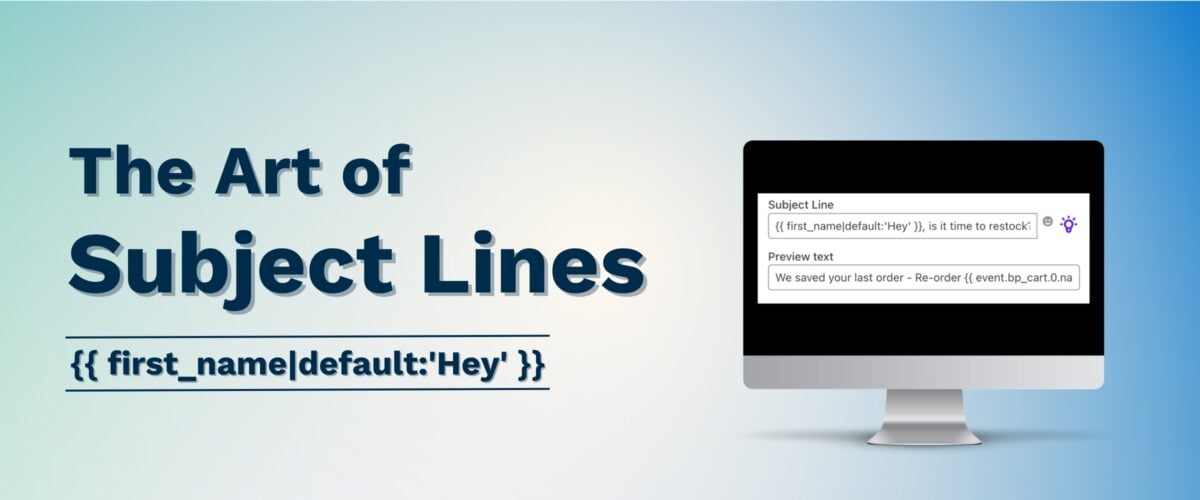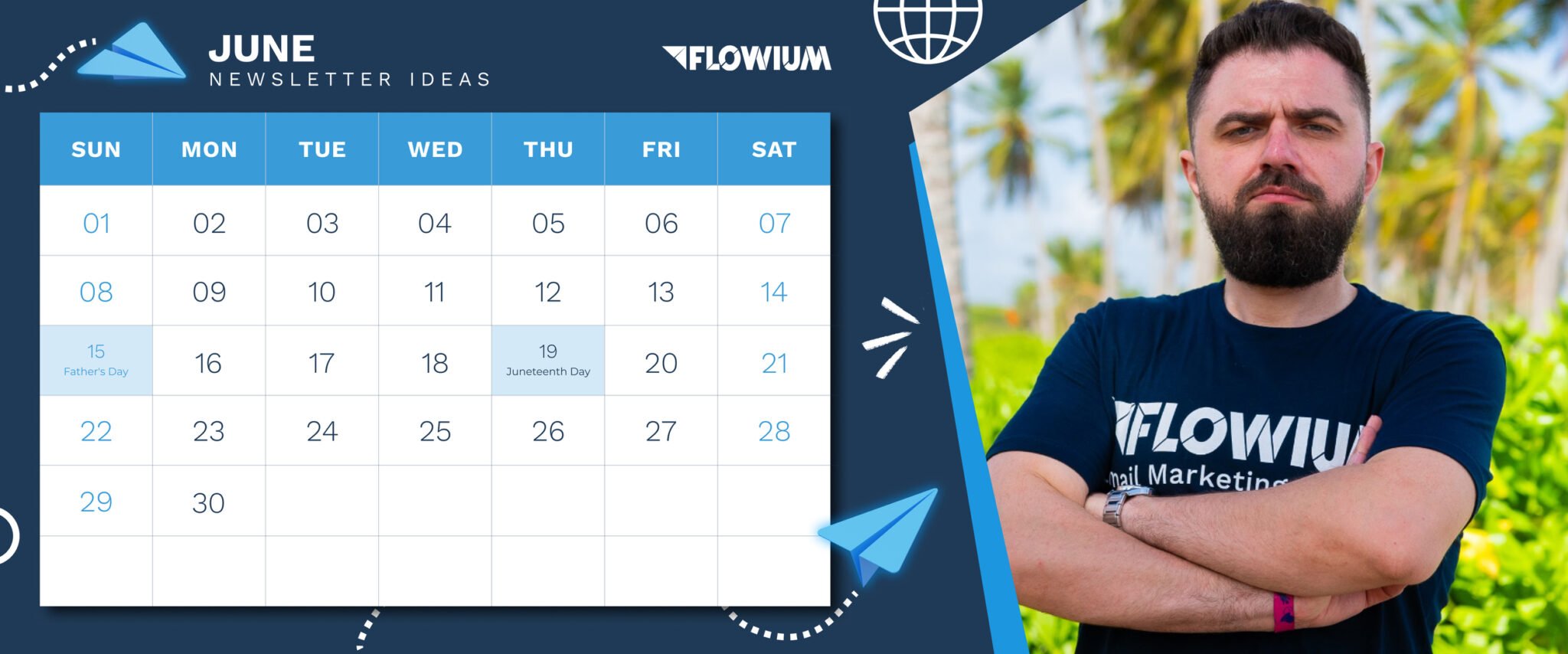Currently, email subject lines rank 2nd in importance when it comes to influencing a reader’s choice of whether to open messages. The only things that rank higher are the sender’s name and brand awareness. Why? Because it frequently catches recipients’ attention first. In addition, if they look at the sender’s name first, they will also look at the subject line before determining whether to open it.
Now, creating professional email subject lines seems like a heavy burden, doesn’t it?
To help you out with this important task, we created a comprehensive guide on the best subject lines for emails with valuable tips from our professional email marketers. Here you’ll find inspiration for creative ideas, practical strategies, and examples that we regularly examine and improve using data from our industry insights and expertise.
Email Subject Lines Examples by Categories
A subject line is an important instrument influencing email open rates, which makes it a matter that cannot be taken lightly. You have to use your creativity, marketing and writing skills to create one that accurately represents the goal of a particular email and suits the campaign overall. Depending on your market, audience, style, and other conditions, there are many effective strategies to use, and here we’ll give you some outstanding ideas. In this list, we categorize the best email marketing subject lines to help you find the most suitable one for your message or draw inspiration for your own creative lines.
Great Email Subject Lines for Holidays
Show your consideration and appreciation to your subscribers by emailing them on special occasions or holiday periods. You can make it more theme-focused by using great subject lines for emails to boost open rates and add to the festive mood.
Halloween Email Subject Lines
- No Tricks, Just Treats!
- A Scary Good Deal Inside
- Seize Our Spooktacular Deals 👻
- Get Ready for a BOO-tiful Halloween with Our Special Offers!
- Unlock Mystical Savings – Halloween Edition!
Best Subject Lines for Black Friday/Cyber Monday Emails
- Our Biggest Sale of the Year Is On!
- As a VIP, Save More This Cyber Monday!
- It’s Time: THE Sale is Here
Thanksgiving Subject Line Examples
- Make Thanksgiving More Than a Meal
- Today, We’re Grateful for YOU!
- Give the Gift of [INSERT BENEFITS OF PRODUCT/SERVICE]
Christmas Subject Lines for Marketing Emails
- Season’s Greetings from [BRAND NAME]
- Have a [WORDPLAY ON YOUR BRAND/PRODUCT, e.g. Radiant for skincare, or Well-Dressed for apparel] Christmas!
- Get All Your Gifts Yet?
Valentine’s Day Subject Line Ideas
- A V-Day Treat for You Inside! 💖
- Be Our Valentine? 💖
- This Is Better Than Roses…
Catchy Subject Lines for Emails on St. Patrick’s Day
- Unlock Your Luck: Exclusive St. Patrick’s Day Deals Inside
- Your Pot of Gold Awaits!
- 🌈 Your Lucky Day is Here! Unwrap St. Paddy’s Savings 🍀
- Cheers to Savings! 🥂 St. Patrick’s Day Delights Await You!
Attention-grabbing Email Subjects for Father’s Day
- The Gift Dad Will Never Forget
- Cool Dads ❤️[INSERT PRODUCT]
- No More Neckties for Father’s Day
Mother’s Day Email Subject Line Examples
- Treat Mom to [INSERT BENEFITS OF PRODUCT]
- 💐Mother’s Day Gift Guide 💐
- Your Mom Deserves This
Best Subject Lines for Easter Email
- Save on [INSERT PRODUCT] This Easter
- Egg-Hunt Our Best Deals
- The Easter Bunny Came Early!
Catchy Subject Lines for Every Season
No need to wait for a special festivity to connect with your customer base. Each season can be its own theme to frame the subject. You can use these ideas of seasonal email subject lines to congratulate your contacts with the beginning of a season, offer mid-season special deals or activities, notify about end-of-the-season sales, etc.
Spring-themed Email Subject Lines
- Invite Spring In with [BRAND NAME]
- Spring Forward with [BRAND NAME]
- A Fresh Start for a New Season
Subject Line Ideas for Summer
- Summer Is for [INSERT BENEFITS OF PRODUCT]
- These Are Perfect for the Summer
- [YOUR BRAND] Summer Bucket List Is Here!
Fall-themed Subject Line Samples
- Changing Seasons Need New [YOUR PRODUCT]
- Fall 🍂in Love with Your Style
- Ready for Fall Flavors? 🍁
Best Email Subject Lines for Winter Campaigns
- Winter-Proof Your [e.g. STYLE, GLOW, SKINCARE, HAIR, ETC.]
- Shrug Off The Cold with [YOUR BRAND]
- Savings You Can (Snow)bank On
Eye-catching Email Subject Lines for 2024
Use unique email subject lines to grab attention of your subscribers. Interesting phrases masterly balanced without resorting to clickbait have proven efficient in increasing open rates.
- 5 Secrets to [INSERT AUDIENCE DESIRE/PAIN POINT]
- ⚠️Limited-Time Offer: [INSERT OFFER]
- Curated Just For <NAME>
- You’ve Changed, <NAME> 🙄
- You’re Not Ready for What’s In This Email 😱
Email Subject Lines That Get Opened
Invoke curiosity to get your messages opened with fascinating subject lines that address the receiver’s interests. To use this strategy, you need to be well-versed with your clientele and employ the best segmentation practices for top-notch personalization.
- The Hidden Truth Behind Your Morning Routine
- The Only Productivity Tip You’ll Ever Need
- <NAME>, You Won’t Believe This…
- We’ve Been Waiting for Months to Announce This
- <NAME>, We Don’t Normally Do This…
Best Email Subject Lines for Sales
Sale-focused campaigns require a different approach to email design and creation than regular newsletters. Professionals like Flowium utilize catchy email subject lines for sales to emphasize the offer and achieve the main goal – clients making purchases.
- Want to Save Big? Now’s Your Chance
- Quick, Grab it Before it’s Gone!
- The [BRAND NAME] Flash Sale is ON
- ⚡Rapid-Fire Deals are Here ⚡
- [INSERT OFFER] % Off Everything Starts Now!
Funny Email Subject Lines
Lighten the mood of your clients with one amusing phrase. This tactic is a great way to establish a warmer connection with your subscribers showing that you’re on the same wavelength. Funny subject lines can include popular memes, comedy references, silly emojis, etc., but don’t forget to consider your audience (not everybody can be fine with such an informal manner of communication).
- You Don’t Want to See What’s in Here. Trust Us.
- Since We Can’t All Have a Personal Chef…
- *UFC announcer voice* FRIDAY, FRIDAY, FRIDAY
- Donut Miss Our Sweet Deals!
- Gurrrl, That’s What You’re Wearing? 🙄
Examples of Newsletter Subject Lines
Make your regular newsletters more appealing to open by using these monthly newsletter subject lines examples as your inspo.
- Your Monthly Dose of Design Inspo Is Here
- Stay Ahead of the Game with [YOUR BRAND]
- 5 Must-Watch Movies for This Week
- New Blog Post: Top 5 [INSERT CATEGORY] Tips
- Read This Before Bed (1 minute)
How to Create Good Email Subject Lines
Specialists at Flowium leverage high-level expertise in designing top-quality marketing emails with the best email subject lines that bring results. We know how to write a striking and creative email subject that encourages subscribers to find out what’s inside. Here we’ll share our knowledge in the form of a brief guide with tips from our experts.
How to Write Good Subject Lines for Emails
Our experience helps us outline some rules of thumb that you can use in any case to write good subjects for emails. Here’s what we’ve accumulated from our practice so far.
Tip 1. Personalize
Personalization can make the recipient feel the email was crafted specifically for them, increasing engagement rates. Try using the recipient’s name or referring to their previous interactions with your business.

Tip 2. Adhere to the character limit
Keep it short and sweet: Most email clients cut off or truncate subject lines after about 60 characters. Aim for about 50 characters to ensure it’s seen in its entirety.

Tip 3. Create Urgency
By creating a sense of urgency or scarcity (e.g., “24-hour flash sale” or “Only 3 items left”), you can stimulate immediate action.
Tip 4. Use Action Verbs
Action-oriented verbs can inspire users to click. Start with verbs to create a sense of action. Use verbs like “learn,” “discover,” or “master” at the beginning of your subject line to inform recipients of the next step they should take.
Tip 5. Test and Analyze
Use A/B testing to find out what works best for your audience. Always keep track of the metrics to understand what works and what doesn’t.

Tip 6. Be Clear About the Benefit
The reader should be able to grasp what they will get from the email directly from the subject line. Clarity outperforms cleverness every time.
Tip 7. Use Numbers
Just like in headlines, numbers (especially odd numbers) can draw attention and set clear expectations.
Tip 8. Capitalize on Emojis
If a picture’s worth a thousand words, an emoji’s speed dial for sentiments. To differentiate yourself from the competition, start or end your subject line with a meaningful emoji.
Tip 9. Ask Questions
Focus on the particular issues or pain points that your target market is attempting to resolve. It is quite probable that they will open and read your email if you can pose a question that they are trying to find the answer to.
Tip 10. Demonstrate Personality
Move your brand’s voice from the email’s body copy into the inbox. An audience with similar values is more likely to connect with your brand’s established, identifiable voice.
Bonus: Make Strategic Use of the Preview Text
Use the preview text to reinforce your message and get subscribers to open your email. An effective strategy? One of our ideas is asking a question in the subject line and hinting at the answer in the preview text.
What to Avoid in Subject Lines for Emails
There are also things that we recommend to avoid if you want to create the best subject lines for email marketing. The practices we collected in this guide below are rather inefficient or even can land your email in spam, so be wary not to use them.
- Avoid ALL CAPS
Using all capital letters can make your email look like spam, potentially decreasing open rates.

- Avoid excessive punctuation
Similarly, too many exclamation points or other types of punctuation can make an email appear spammy. Rule of thumb: don’t use an exclamation point and a question mark in one subject line.
- Don’t be misleading
Make sure your subject line accurately represents the content of the email. Deceptive subject lines give readers the impression that they’ve been duped, which increases the likelihood that they will unsubscribe and could harm the reputation of your company.
- Avoid spam trigger words
Certain words can trigger spam filters and should be avoided. Examples include “free”, “buy now”, “save $”, “earn $”, etc.
- Don’t ignore mobile
Over half of all emails are opened on mobile devices. Ensure your subject lines are optimized for smaller screens (between 30 and 50 characters).
- Avoid being too formal
Keep in mind that email isn’t a formal means of communication and that people don’t speak like machines. To make your audience feel at ease and in line with your brand, write in a conversational and kind manner.
- Don’t forget to proofread
Spelling and grammar mistakes can harm your brand’s image. Always double-check your work.
- Avoid Using Clickbait Phrases
Never rely solely on shock or surprise value to make a point. Instead, use real, useful language to foster trust.
FAQ
What is the subject in an email (with an example)?
The primary objective and purpose of the information in an email is its subject. An email’s objective and goal are supported by its subject line when it appears in the inbox. Make sure it’s optimized for your audience because this one line of content can often determine whether an email is opened or discarded.
What is the main purpose of email subject lines?
The main goal of an email subject line is to grab subscribers’ attention and convince them to click and engage with the email content. You can increase the number of consumers who open your emails, target the right audience, and keep your message out of the spam folder by taking a little more time to craft it by using the best practices and examples that we present above. Additionally, compelling email subject lines encourage readers to click through.
What’s a good subject for an email?
It’s crucial not to deceive subscribers with misleading subject lines. It should serve as a hook, enticing recipients to explore the rest of the message in the email. You should also indicate to your readers from the start what kind of benefits they can expect from reading your emails.
Final Thoughts
Overall, the importance of using the best email subject lines is not to be overlooked, especially in 2024 when customers’ inboxes are overfilled with messages. Since just over 20% of marketing emails are opened on average across all industries, a sizable portion of the emails you send will go unseen. Your design, personalization, and images are all important, but they won’t matter if you can’t get readers to open them in the first place. To achieve your goals and overcome competition, invest effort in creating excellent email content. If you need professional assistance, Flowium is ready to help you obtain the openings that lead to clicks and sales. Talk to us to receive consultation from our experts.







